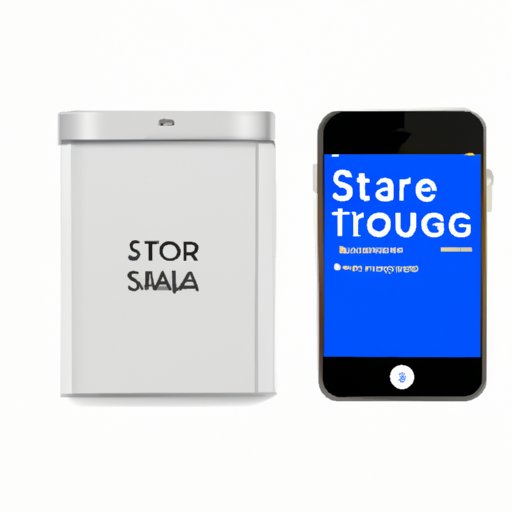
I. Introduction
Do you feel like you constantly run out of storage on your iPhone despite deleting apps and files? You’re not alone. Many iPhone users struggle to keep adequate storage space on their devices. This article will explore various solutions for freeing up storage on your iPhone, allowing you to use your device without constantly worrying about running out of space.
II. Clear out unused apps
Deleting unused apps can be an excellent way of freeing up space on your iPhone. Apps take up storage space, and some apps can take up a lot of space. Start by identifying which apps you haven’t used in a while, and consider deleting them. You can check an app’s storage usage by going to “Settings > General > iPhone Storage”, selecting an app, and viewing its size.
Another way to identify unused apps is by checking the “Last Used” date for each app. Go to “Settings > General > iPhone Storage”, select an app, and view its “Last Used” date. If it’s been months since you last used an app, consider deleting it.
Finally, prevent apps from taking up too much space in the future by turning off app auto-downloads and deleting app caches. You can do this by going to “Settings > App Store > App Downloads” and “Settings > General > iPhone Storage > Review Large Attachments”.
III. Remove unwanted photos and videos
Photos and videos can take up a lot of space on your iPhone. Start by reviewing your Camera Roll for photos and videos you no longer need. Delete duplicates, blurry images, and screenshots you no longer need.
You can also use the “Optimize iPhone Storage” feature to save space. This feature automatically replaces original photos and videos with optimized versions. To enable this feature, go to “Settings > Photos” and select “Optimize iPhone Storage”.
You can also take advantage of the “Recently Deleted” feature, which allows you to recover deleted photos and videos for up to 30 days. To access “Recently Deleted”, go to “Photos > Albums > Recently Deleted”.
IV. Optimize storage settings
Optimizing storage settings can help free up space on your iPhone. There are several settings you can adjust to optimize storage. For example, you can optimize music storage by only downloading music you listen to frequently. To enable this feature, go to “Settings > Music” and select “Optimize Storage”.
You can also optimize Messages storage by automatically deleting older messages. To enable this feature, go to “Settings > Messages” and select “Keep Messages”.
Other storage settings you can adjust include “Offload Unused Apps” and “Automatically Delete Old Conversations”. To access these features, go to “Settings > General > iPhone Storage”.
V. Use cloud storage services
Cloud storage can be a great way to free up storage on your iPhone. With cloud storage, you can store files and data on a remote server, freeing up space on your device. Some popular cloud storage options include iCloud, Dropbox, and Google Drive. Each service offers different features and storage options, so it’s important to choose the best one for your needs.
To use cloud storage on your iPhone, you’ll need to download the appropriate app, sign up for an account, and start uploading files and data. You can access your cloud storage on your iPhone by using the appropriate app or by logging in via a web browser. iCloud is already integrated into your device. You can enable iCloud under “Settings > iCloud”.
VI. Consider external storage solutions
If you’ve tried all of the above solutions and still need more storage space, external storage solutions may be the answer. External storage devices allow you to store files and data externally, freeing up space on your iPhone. Some popular external storage options include USB drives and wireless hard drives.
To use external storage with your iPhone, you’ll need an adapter or wireless connection. You can purchase lightning to USB adapters or wireless hard drives compatible with iPhones online or at an electronics store. Once you have your adapter or wireless connection set up, connect your external storage device and start transferring files and data.
VII. Conclusion
In conclusion, there are several solutions for freeing up storage on your iPhone. By clearing out unused apps, removing unwanted photos and videos, optimizing storage settings, using cloud storage services, and considering external storage solutions, you can ensure you have adequate storage space on your device. It’s important to maintain adequate storage space to ensure your device can function properly and to prevent performance issues.
Lastly, remember to regularly review your storage space and implement the above solutions to maintain an efficient iPhone.




